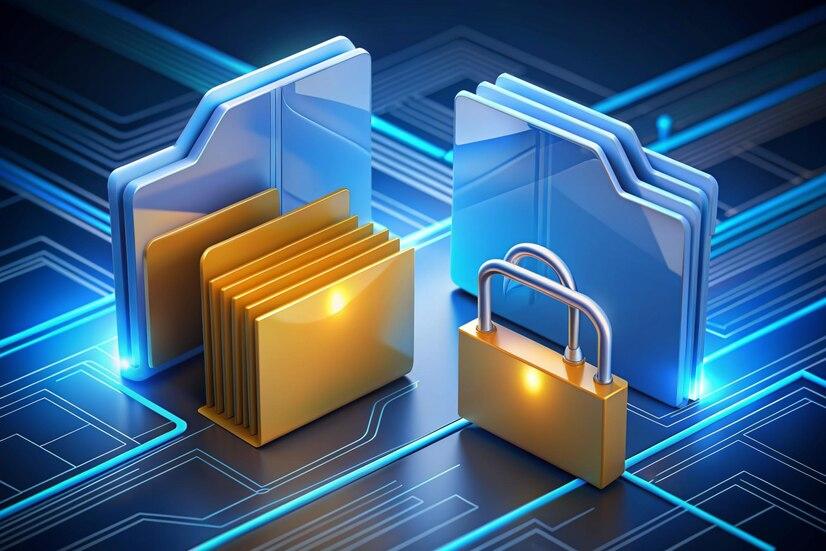Every business has a lot of sensitive files, some have 10-100 GB, others have terabytes. With data breaches and hacking incidents on the rise, it’s crucial to protect sensitive information during file sharing. One of the key pieces of the cybersecurity puzzle is protecting sensitive documents during file transfer. If you have secure transfer channels in place, you’re already head and shoulders above many of your competitors. Here are some reliable ways to transfer data.

1 Cloud-Based Services
Cloud-based services make secure file sharing convenient and accessible by utilizing encryption and access controls. Platforms like iCloud Drive, OneDrive, and Wormhole offer features such as file sharing, synchronization, and version control, ensuring users can store and share files securely.
Key Security Features:
- Encryption: Platforms use Advanced Encryption Standard (AES) and file-based encryption to prevent unauthorized access.
- Access Controls: You can manage who has access to your files and folders.
- Secure Sharing: Options to share sensitive information securely with others.
To further enhance security, follow these best practices:
- Encrypt Files: Encrypt your files before sharing them.
- Use Strong Passwords and Two-Factor Authentication: Protect your accounts with robust security measures.
- Limit Access and Track Activity: Control who can access your files and monitor any activity.
2 Fax
Fax communication is one of the few that is recommended by regulators even in areas with increased security requirements: medicine, the public services sector, security companies, etc. And it does not necessarily have to be an analog version, there is also digital fax. To use them, you need an iPhone app. With an app such as FAX from iPhone, you can safely send and receive documents directly from your smartphone. This is a more economical and practical way to work with fax.
3 Email Attachments
Many people think email is the best way to send sensitive files, but it has its drawbacks. Once a message reaches the recipient, it may not be secure (encrypted). Plus, email accounts can be compromised, and many platforms have size limits that aren’t suitable for large images or videos. A dedicated end-to-end encrypted email service is often a better choice, but there are other options as well.

4 Peer-to-Peer Networks
Peer-to-peer (P2P) file transfer allows direct data sharing without needing a central server. Instead, individual users connect to a distributed network, transferring files across their own connections.
P2P file transfers are often faster than cloud-based services and don’t require a third-party provider. However, it’s not recommended to use P2P for sensitive files. To protect your privacy when using P2P, always use a Virtual Private Network (VPN) for added security.
This can be done in a number of ways, but the simplest is to use a VPN. It not only offers data encryption, but also replaces the IP address, preventing users from being tracked and targeted attacks. VPN protects against two types of vulnerabilities at once: attacks by IP address and interception or forgery of data during its transmission.
5 Encrypted File Transfer Protocols
Encrypted file transfer protocols like Secure File Transfer Protocol (SFTP) and FTPS (FTP over SSL/TLS) provide a secure way to transfer files over networks. These protocols use encryption to protect data during transmission by employing public and private keys to authenticate both the sender and receiver.
Using these encrypted file transfer protocols ensures that your data stays confidential and is only accessible to the intended recipient. Additionally, they add an extra layer of security by encrypting the data, preventing it from being intercepted or tampered with by anyone other than the sender and receiver.
6 SFTP
SFTP, or Secure File Transfer Protocol, encrypts files during transmission using SSH (Secure Shell), making it a secure option for businesses needing to share large files. However, SFTP setup and use can be complex and typically require technical expertise.
Showell simplifies secure file sharing with its intuitive user interface, allowing you to share large files effortlessly without needing any technical knowledge.
Conclusion
Secure file sharing is crucial in today’s digital world for protecting sensitive information and ensuring regulatory compliance. By learning about different file sharing methods, adhering to best practices, and using secure file sharing solutions, both businesses and individuals can share files safely without compromising data security or privacy.


